
Minoan Plumbing at Agia Triada
Minoan Toilets, Drains, and Water Pipes
Introduction to Minoan Plumbing
Agia Triada or
Αγία
Τριάδα
is a Bronze Age site in south central Crete,
just a few kilometers from the Mediterranean Sea
and close to the Minoan palace complex of
Phaistos.
Agia Triada was not a Minoan palace like Phaistos,
Knossos,
or Malia.
It was a sophisticated town, possibly a royal villa
and a second large mansion.
Just as at other major Minoan sites like Knossos and Malia,
Phaistos had surprisingly sophisticated plumbing.
It's thought that the Mycenaean Greeks attacked Crete around
1450 BCE, destroying the major Minoan palace complexes
including nearby Phaistos.
Agia Triada was rebuilt and took over the role as
capital of south-central Crete, continuing until
the 13th century BCE.
See the
start page
for background on the Minoans and
the late 19th and 20th century discoveries.
You'll need a car to get to Agia Triada.
It's over the central ridge from Heraklion,
near the south coast of Crete.
The Roads company makes excellent maps of Greece,
buy a map at a service station.
Θα
ήθελα
έναν
χάρτη,
παρακαλώ —
I would like a map, please.
Don't try to get there using this 1926 map of Ancient Greece,
although it does orient you to where Agia Triada
is located within Crete.
See "Phaestus" near the southern coast, just west of Gortyna.
The relatively new city of Heraklion isn't shown.
It's on the coast north of Knossos, shown here as "Cnossus".
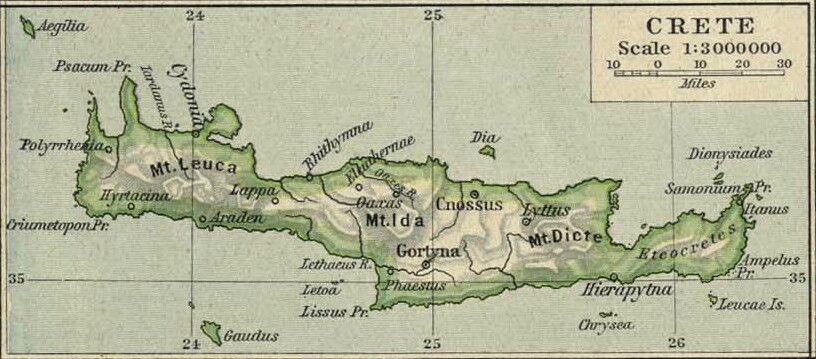
1926 map of Ancient Greece from the Perry Castañeda Library Map Collection at the University of Texas.
This map shows the topography of the area. Agia Triada and Phaistos are in the broad valley of the Mesara plain. They're on a small ridge between Moírai and Pómbia. To the north is the Psiloritis massif including Mount Ida, the highest peak in Crete at 2,456 meters. To the south is the Asterousa range running parallel to the coast.
The broad valley is rich agricultural land inhabited since the Neolithic.
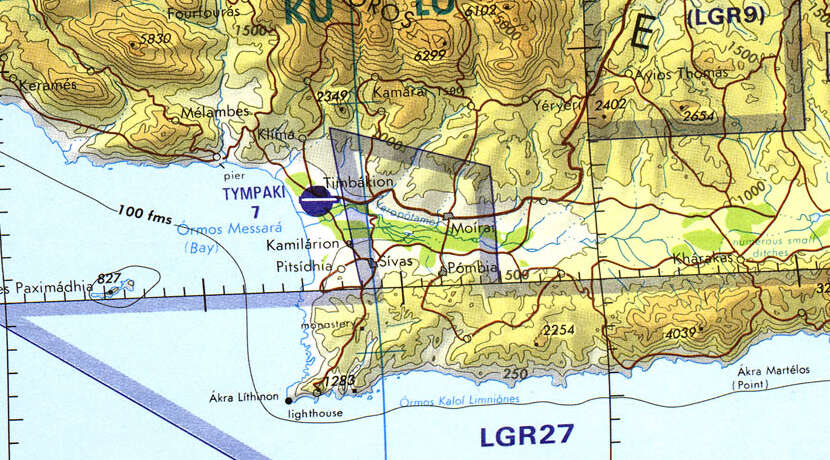
Tactical Pilotage Chart G-3D from the Perry Castañeda Library Map Collection at the University of Texas.
And finally, for turn-by-turn directions when you get close:
Let's Visit Agia Triada!
Agia Triada is an L or Γ-shaped complex with two large villas. A walkway with several staircases leads down from the parking area to the east side of the complex. As you enter you're looking over the better preserved of the two large structures, protected by a modern roof, and beyond that to the coast and the Libyan Sea.
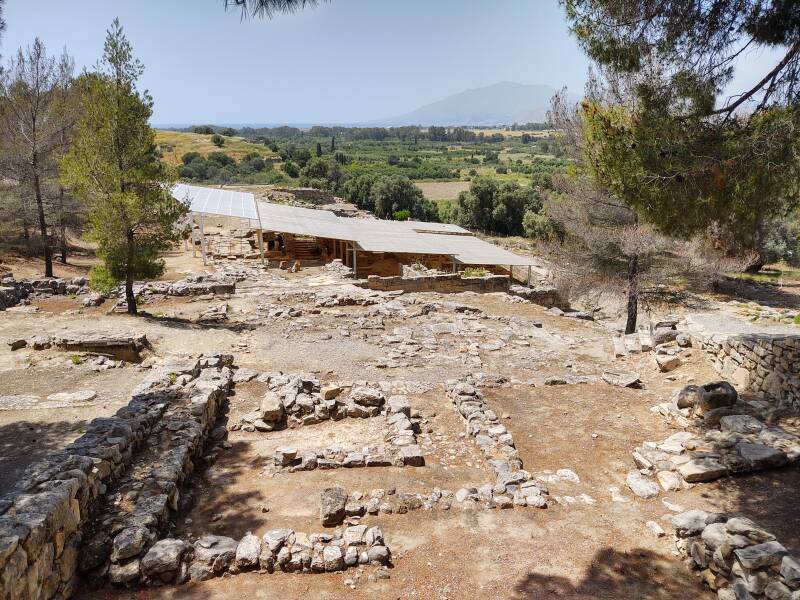
To the right as you enter you see a district of small houses in the northeast corner of the settlement. Objects found there show that they were occupied by craftsmen and farmers.
These pictures are from a visit in late April when snow remained on the Psiloritis massif to the north, even on its south-facing slopes.
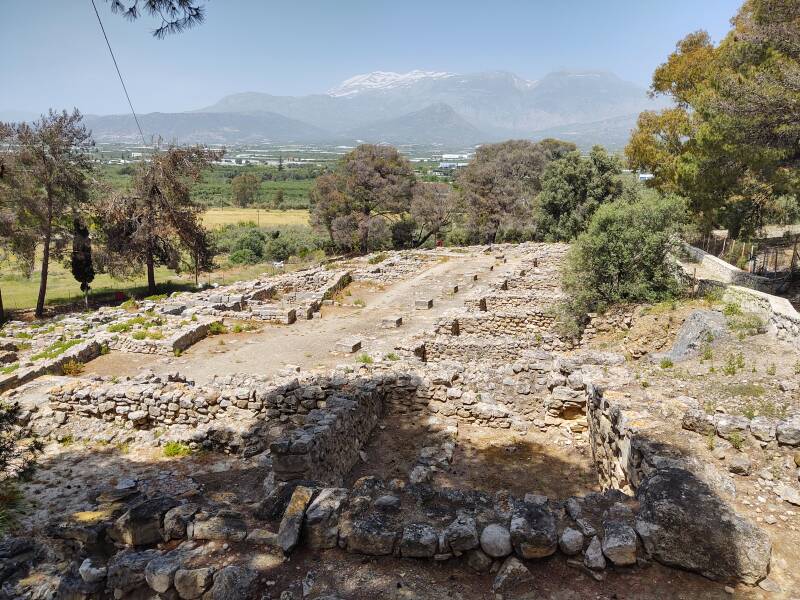
We don't really know very much about the Minoan civilization. They left very little in the way of written records. We can't read what little we have found, beyond a few inventory lists of food storage and offerings made to deities we know little about.
The Minoan civilization was sophisticated but literally pre-historic.
Agia Triada seems to have been the "summer palace" of the rulers of Phaistos, three kilometers to its east. It may have served as the administrative port town for Phaistos, although the harbor would have been another three kilometers to the west.
Here is Agia Triada's slightly larger residence under the modern roof. Only the lowest of multiple levels survives. Notice the open plaza to its west, at upper left here.
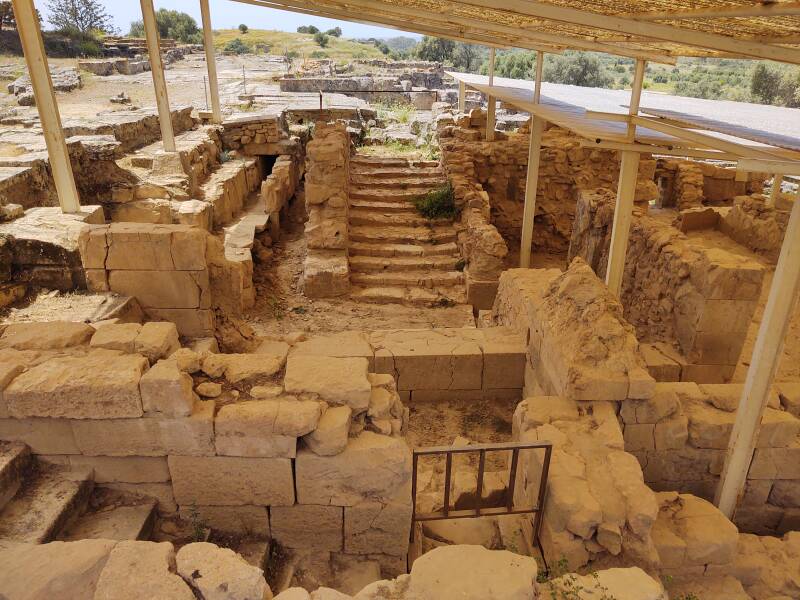
Above and below we see a large drain to the left of that staircase. It carried rain water from the open plaza.
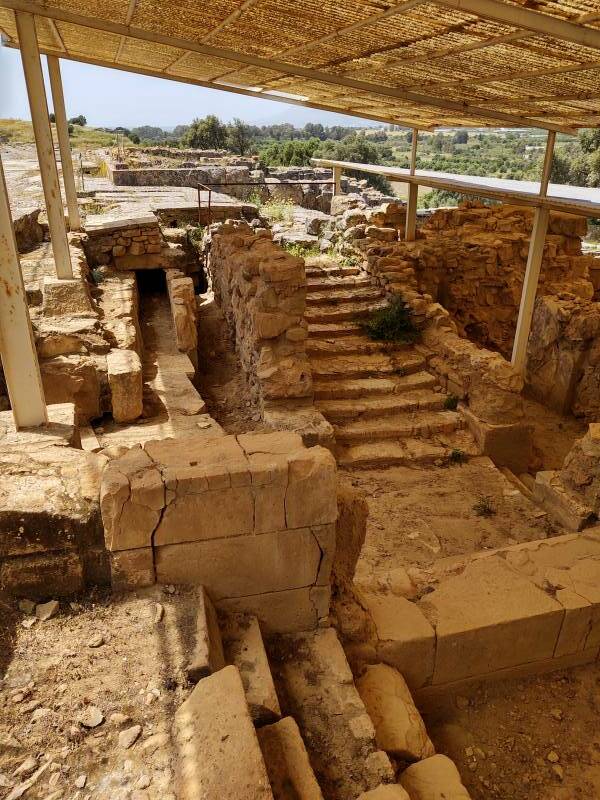
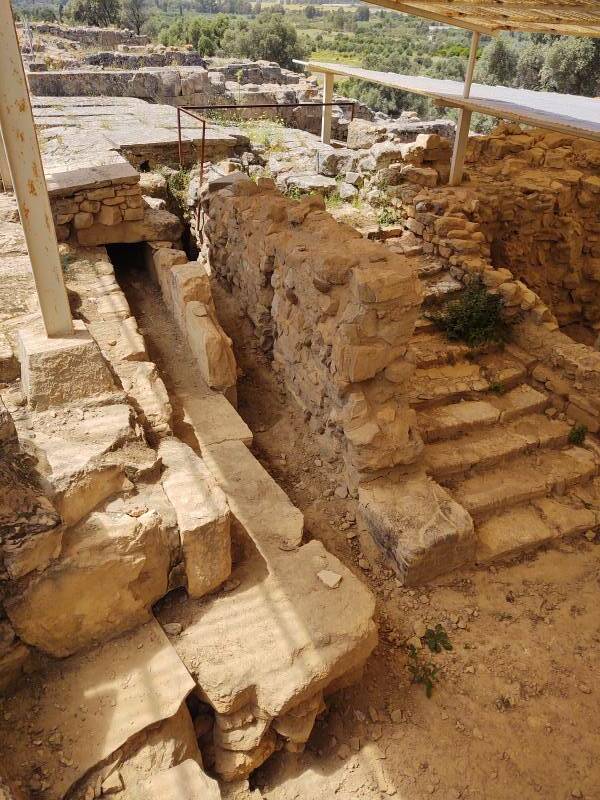
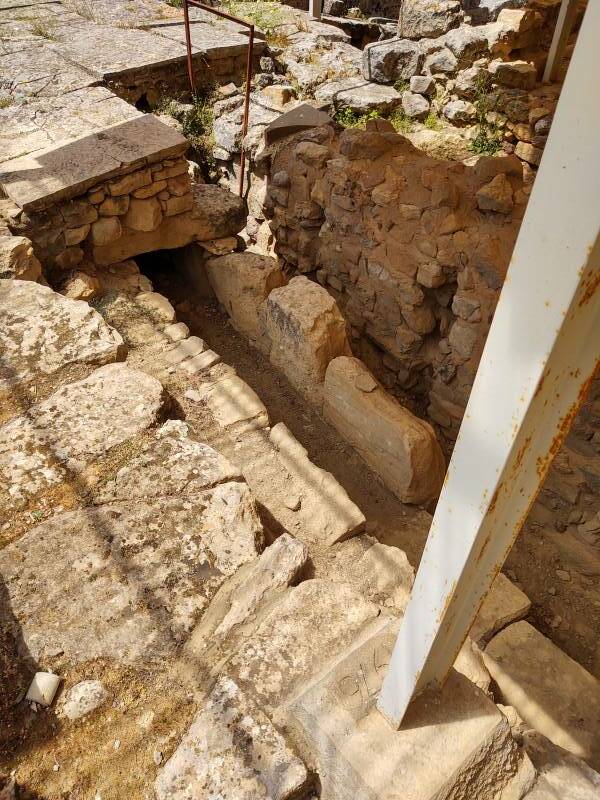
Out on that plaza we see where the water was collected and sent into that drain. While this was a significant plaza, it wasn't a central courtyard fully surrounded by sizable structures, as found at what we consider to be true palaces at Phaistos, Knossos, and Malia.
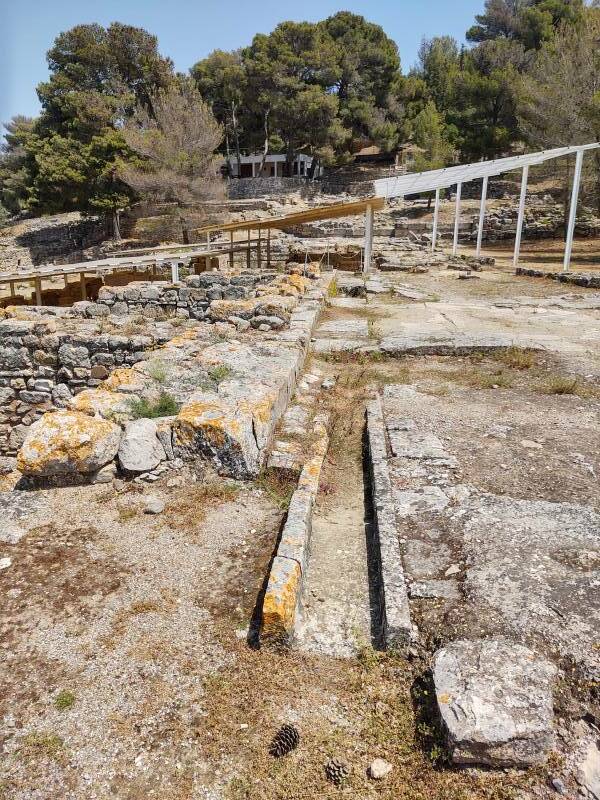
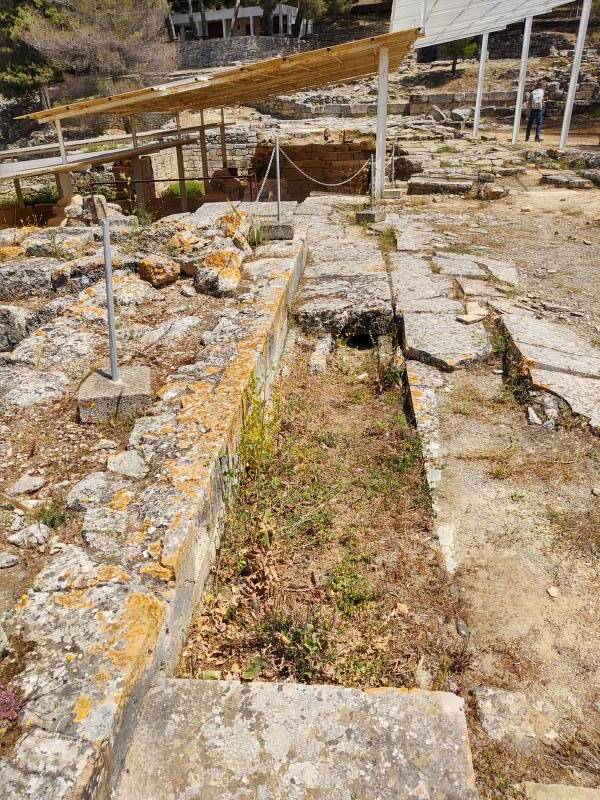
Below the floor of the villa, the drain line turns 90° toward the north and another drain line joins it.
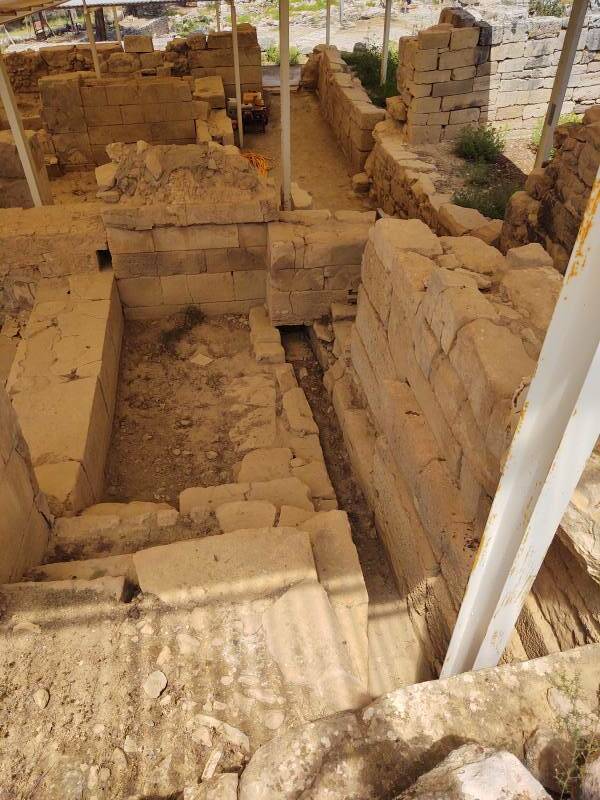
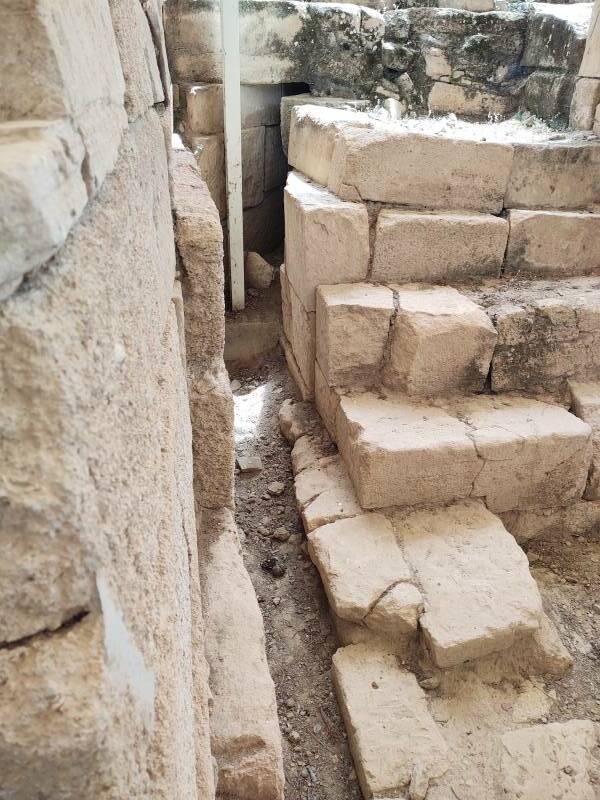
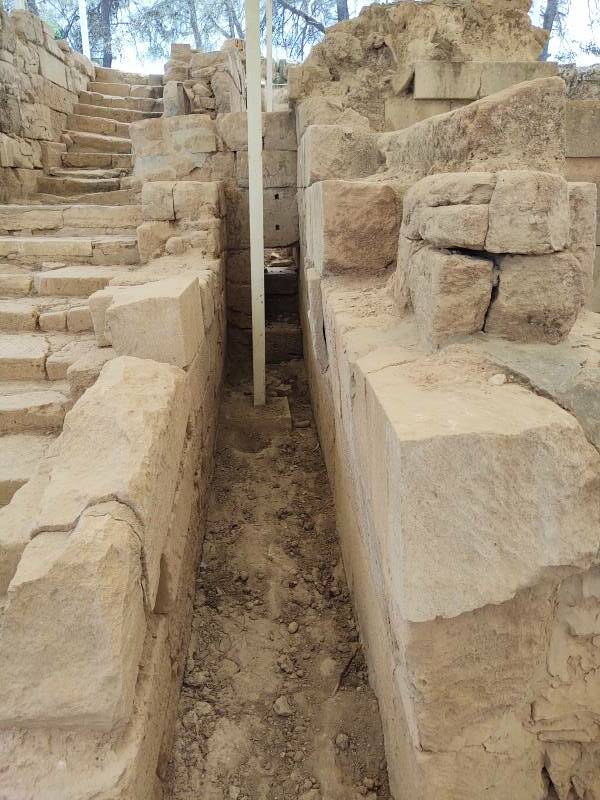
Another drain line runs at a higher level. It is built from stone channels with U-shaped cross-sections.
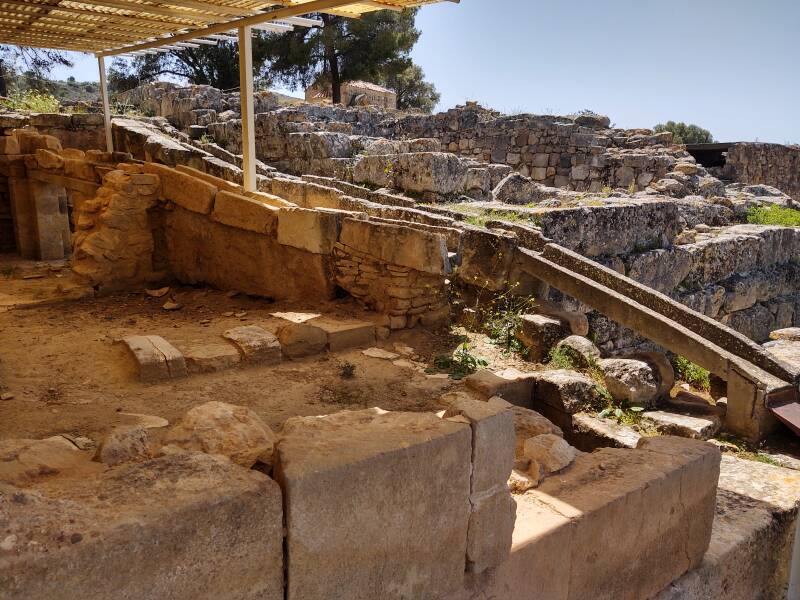
A modern metal extension has been added to replace a missing stone section of the original.
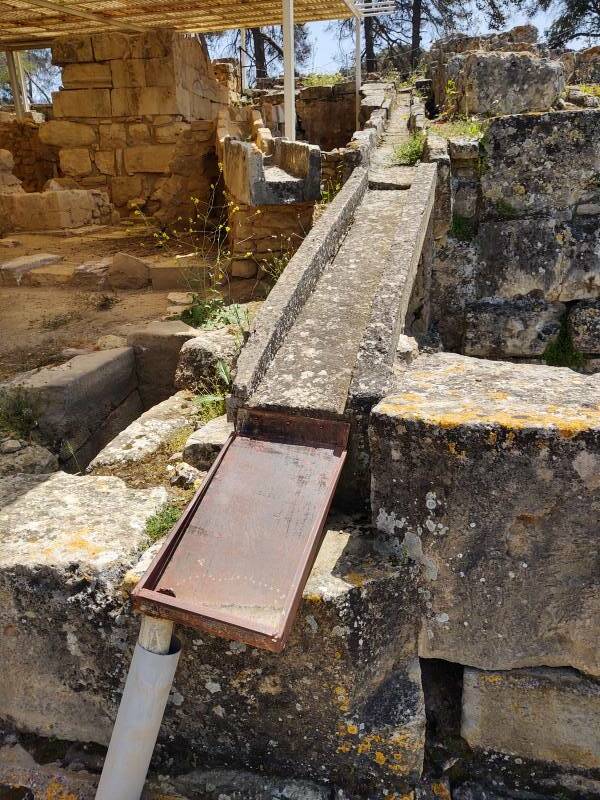
The drains continue along the lower side of the complex, leading off to the north.
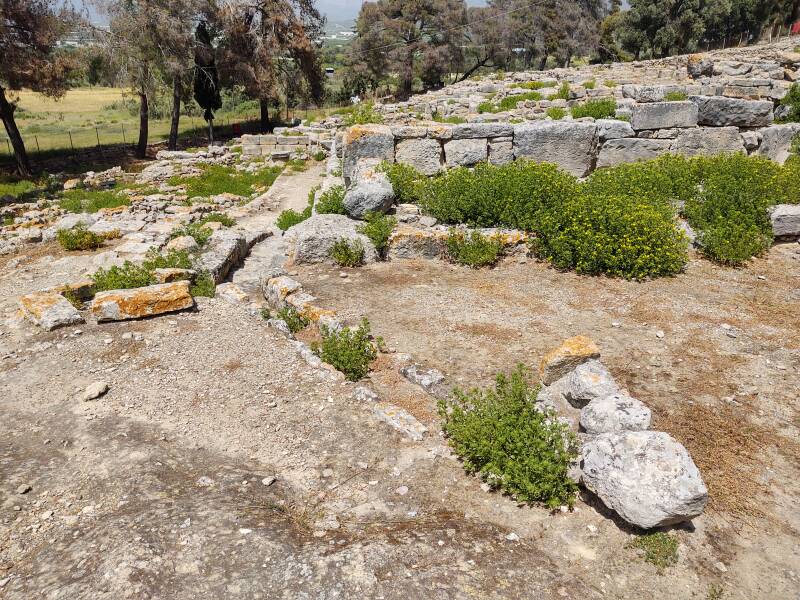
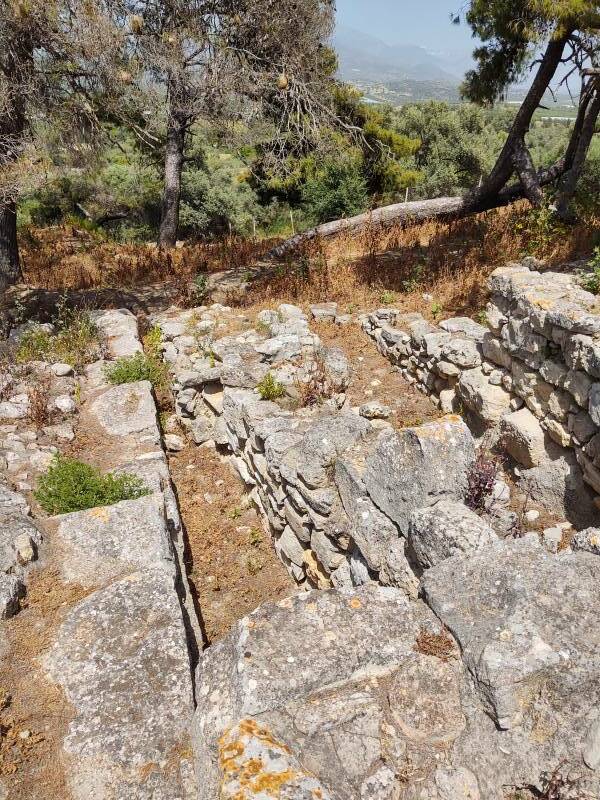
Pithoi
A πίθος or pithos is a large storage container. Pithoi were used to store grain, oil, and other bulk goods.
The local climate was wetter when Agia Triada was inhabited, but the fresh water would still have been limited. Some of the pithoi could have been used to store water.
A full pithos would be enormously heavy! So, they were made in a way that some form of crane could move them. Multiple handles or rope attachment points surround their tops.
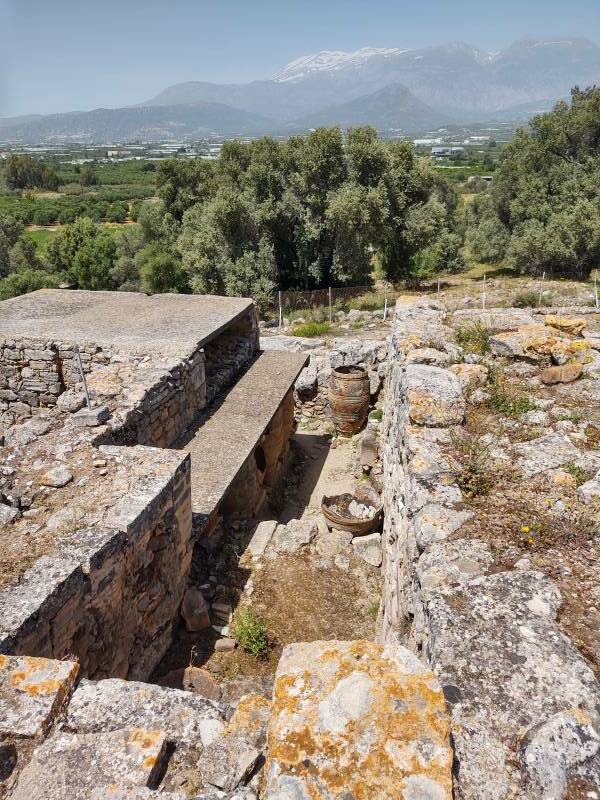
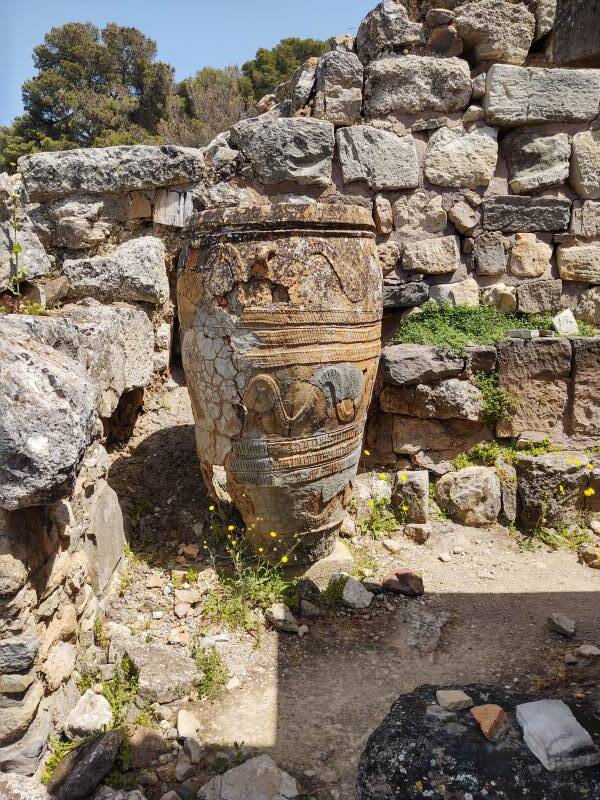
The Lustral Basin
The second mansion at the west edge of the Agai Triada complex contains a lustral basin. As described on the introductory Minoan plumbing page, "lustral basin" is a rather fanciful term. They almost certainly were not used for "lustration" or ritual bathing. But, since the Minoans seem to have recorded almost none of their religious or cultural practices, we don't know what those might have been. These lustral basins are found with a consistent design at many Minoan sites, so there must have been some standardized purpose for them.
A lustral basin is within what used to be a room beneath the west edge of the large plaza. Let's take a look at it.
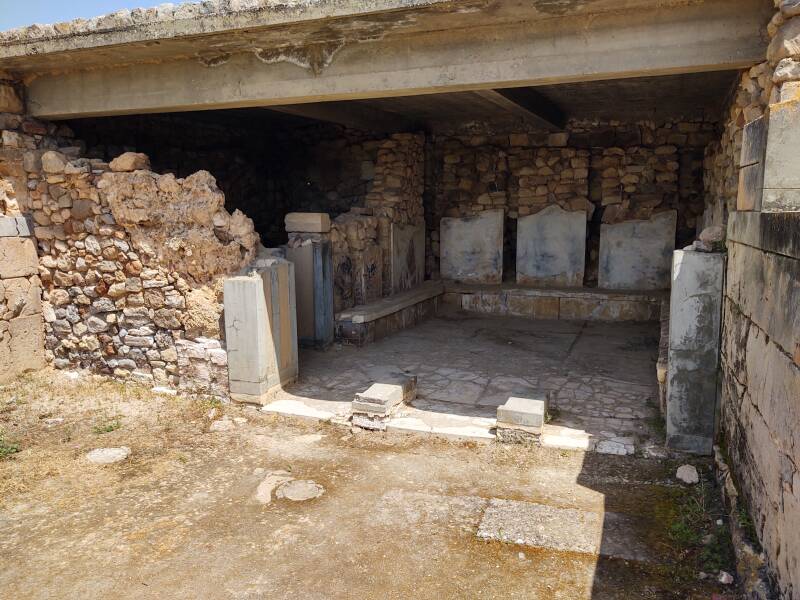
As you can see above and below, the large room is lined with benches along its three walls. The lustral basin is to the left as you enter.
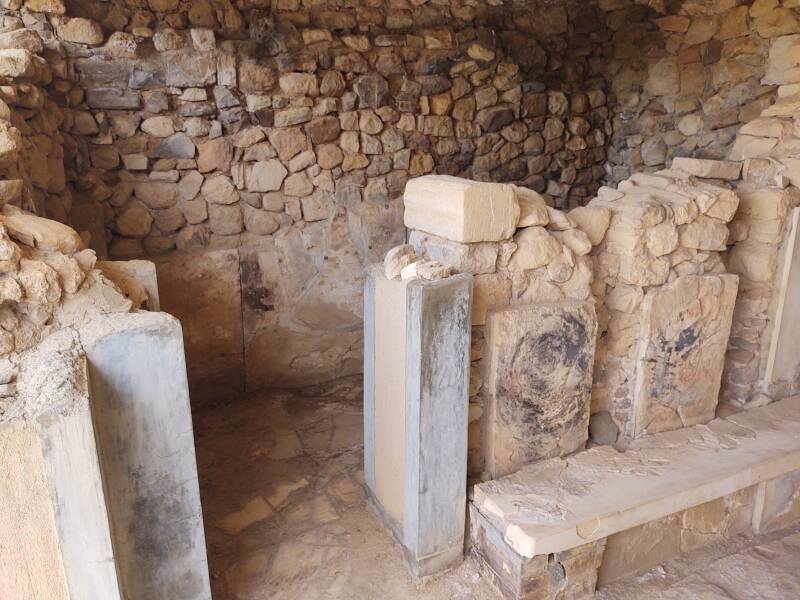
Here it is! This is a rare opportunity. You can't get close enough to the lustral basins at Knossos, Phaistos, and Malia to see into them, let alone step right in. But, there's not much to see here.
This one is a little different. Most of the lustral basins were approached by a short staircase that made one or two 90° turns that entered the basin at one corner. However, you simply step right into this one.
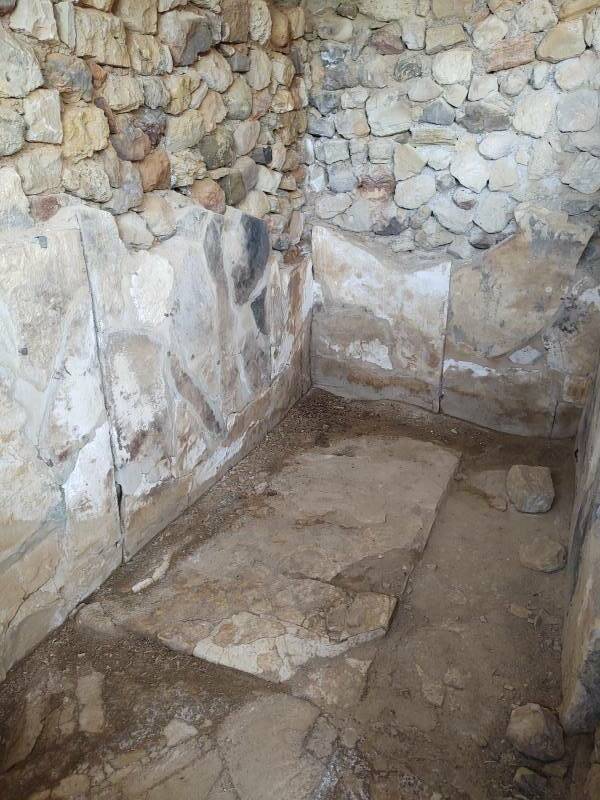
As described earlier, one reason we're pretty certain that the lustral basins weren't used for ritual bathing is that they were lined with panels of gypsum. That's a soft and moderately water-soluble mineral.
A gypsum-lined lustral basin would be like lining your shower stall with bare sheetrock or drywall, or plaster, or chalk, which are all made from gypsum. Or really, worse yet, building your bathtub that way.
Plus, while the Minoans clearly understood both drains and water supply lines, there are none around any of the lustral basins found to date.
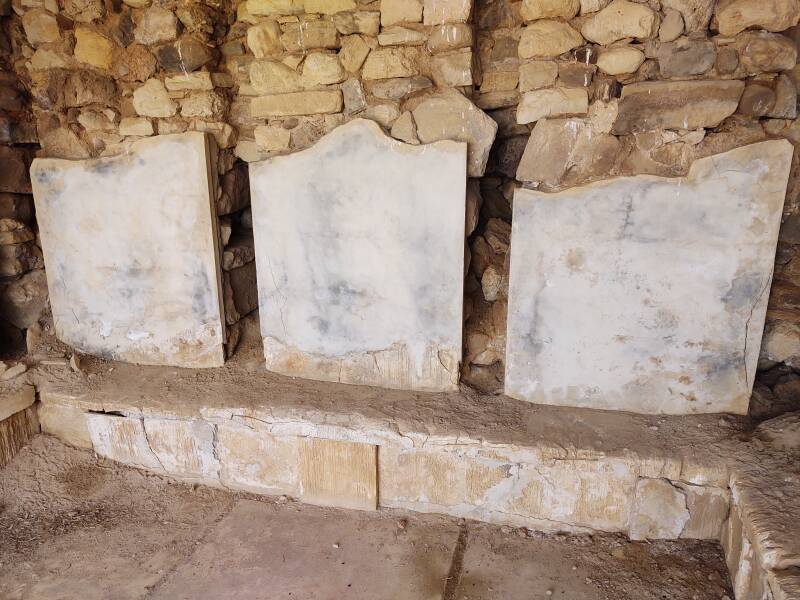
Above and below are some further large gypsum panels in the room beside the lustral basin.
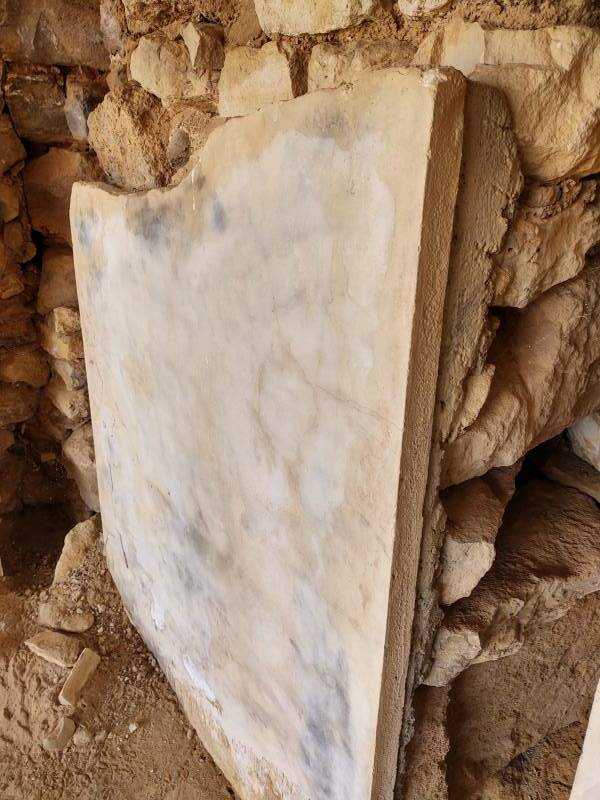
The Agia Triada Sarcophagus
One of the outstanding finds at Agia Triada is a large limestone sarcophagus, dated to 1400 BCE or shortly thereafter, just before the Mycenaean invasion.
The sarcophagus is interesting because of how it differs from most such pieces.
A λάρναξ or larnax is a small coffin, bone-box, or ash-box used for human remains. Here are several larnakes in the Heraklion Archaeological Museum.
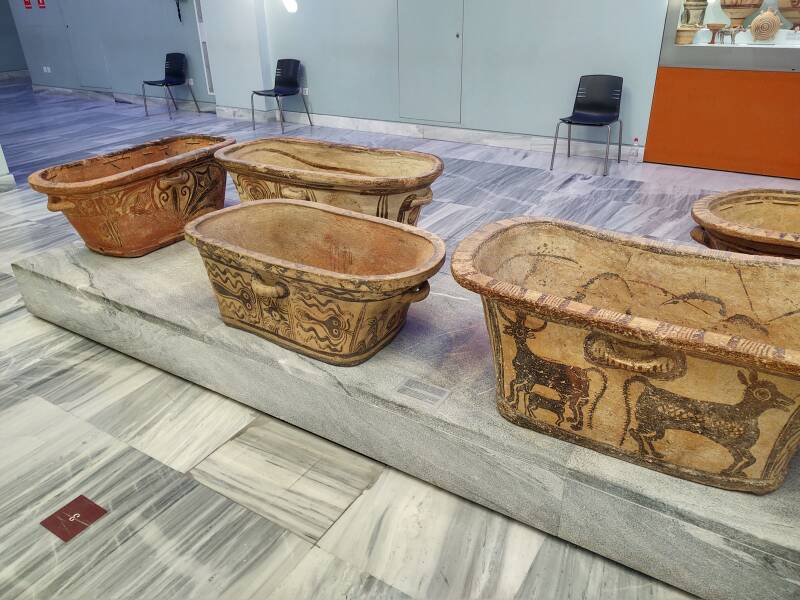
One of them is decorated with an octopus theme, a common style of larnax.
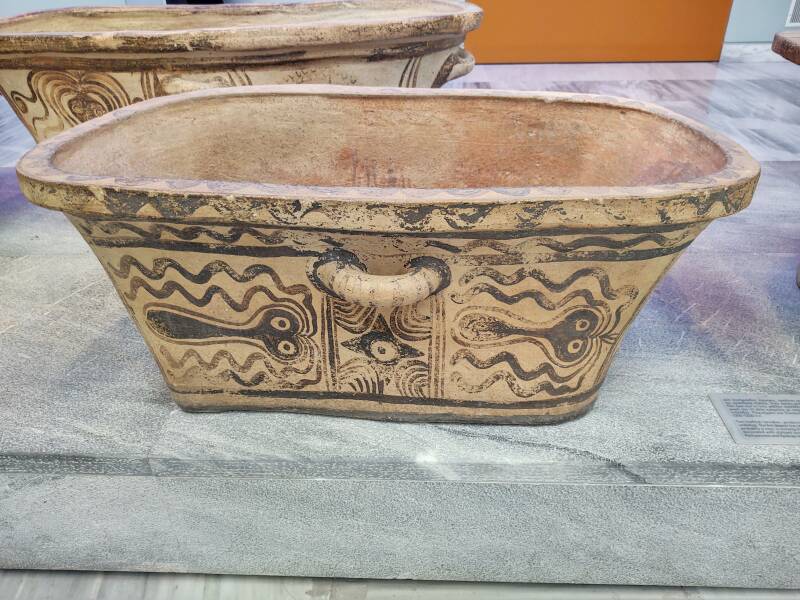
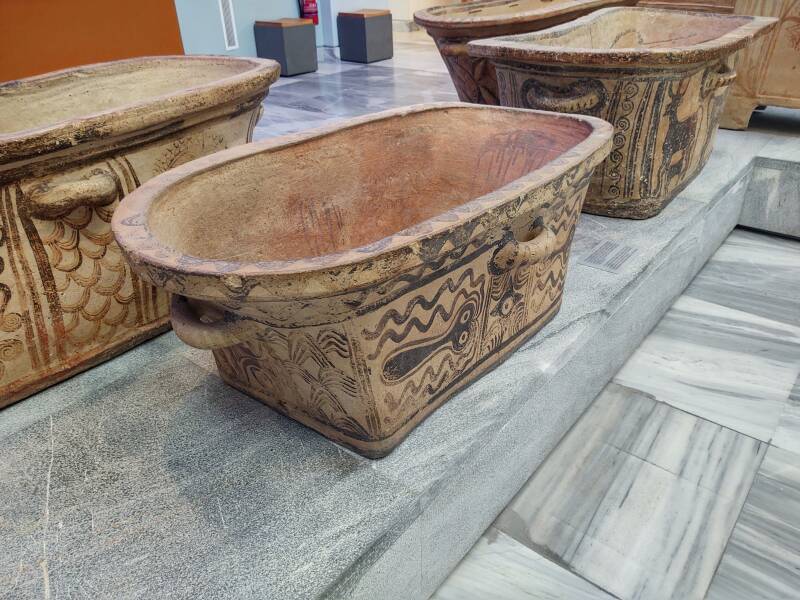
However, Minoan larnakes usually have drain holes. See the drain hole at the end of this one. So, it seems that their owners may have used them as bathtubs before being buried in their tub.
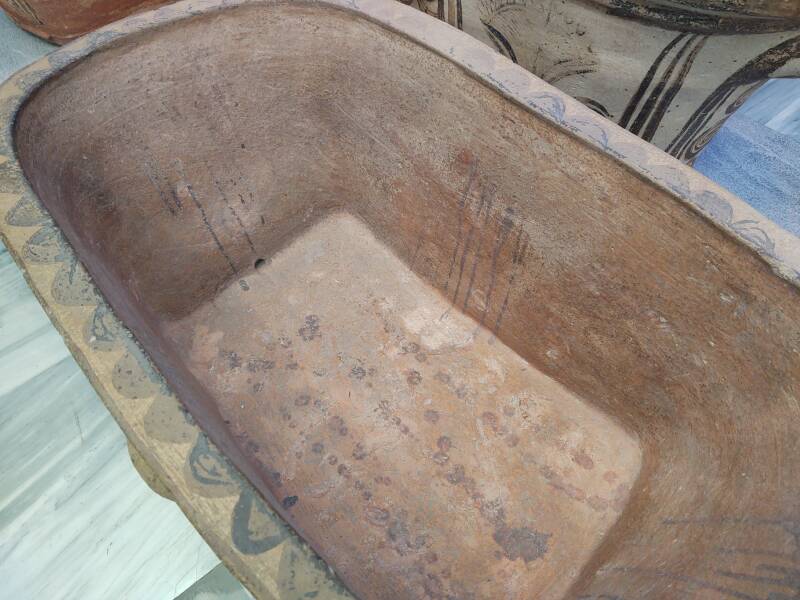
And so, the Agia Triada sarcophagus is of a very unusual design. It is carved from limestone instead of being constructed from ceramic material. Its surfaces are planar, not curved like a bathtub. It has no drain and thus would not have been a practical bathtub. Finally, it is coated with plaster and painted with frescoes on all its surfaces.
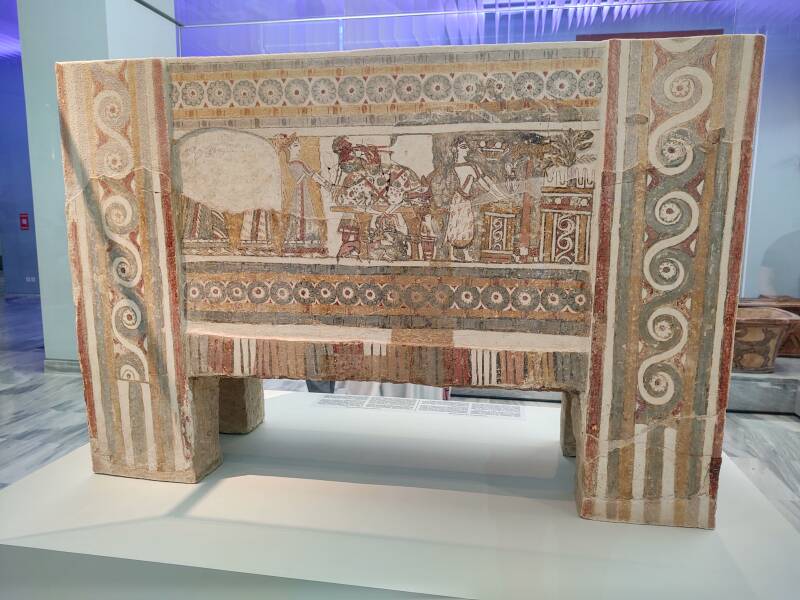
Normally, the Minoans only used frescoes to decorate palaces and homes. This is a unique piece. Also, it depicts narrative scenes of Minoan funerary ritual. We have no written descriptions, but at least there are the pictures on this piece. Researchers think that what's depicted probably combines Minoan and Mycenaean ritual and artistic style, with some influence from Ancient Egyptian religion.
This side shows the sacrifice of a bull, which is lying tied down on an altar. Its blood is pouring into a rhyton or other ritual container. Small animals, or perhaps terracotta models, are under the altar table. Researchers have variously described them as calves, goats, or deer. A man standing behind the altar is playing the aulos double flute. As usual around the eastern Mediterranean, women are depicted with much lighter skin than men, white rather than brown to dark red. A woman to the right of the central altar faces a pole with a labrys or double ax at its top, with a black bird sitting on it. At the far right (fully visible above, partially below), there is either another altar or the tomb, topped with four Horns of Consecration symbols, and with a seven-branched tree in the background.
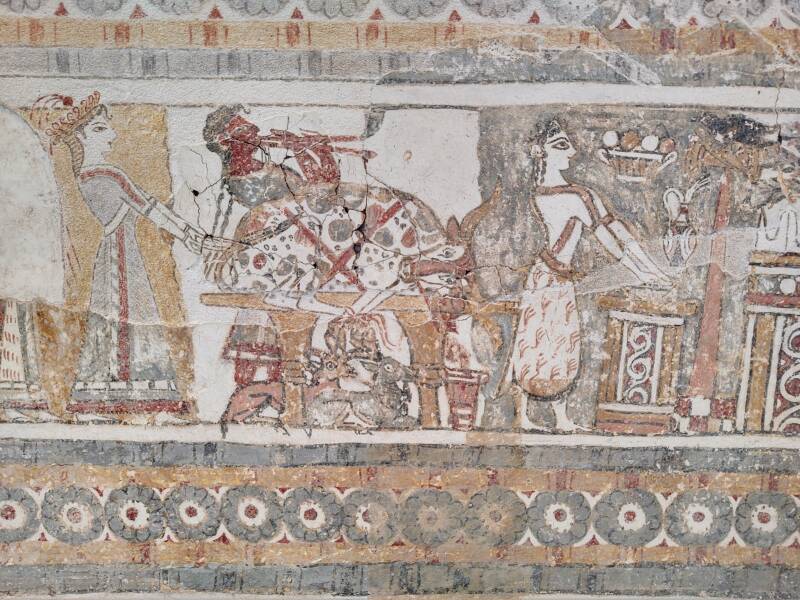
The low altar at the center would likely be for the chthonioi or earth deities, and the high altar at the right for the ouranioi or sky deities.
On the other side, starting at the left, a woman is pouring liquid into a large bronze cauldron. This might be the bull's blood collected in the scene on the opposite side. The cauldron sits between more poles topped with labrys or double axes.
Behind her is another woman carrying a pair of vessels on a yoke. Maybe it's more blood, there's a lot of blood in a bull.
Behind her is a man playing a seven-string lyre. This is the earliest known depiction of a Greek lyre.
To the right are men carrying models of animals and a boat toward a man shown with no arms or feet. Scholars believe that he is the dead man, receiving animals and a boat for his journey to the next world.
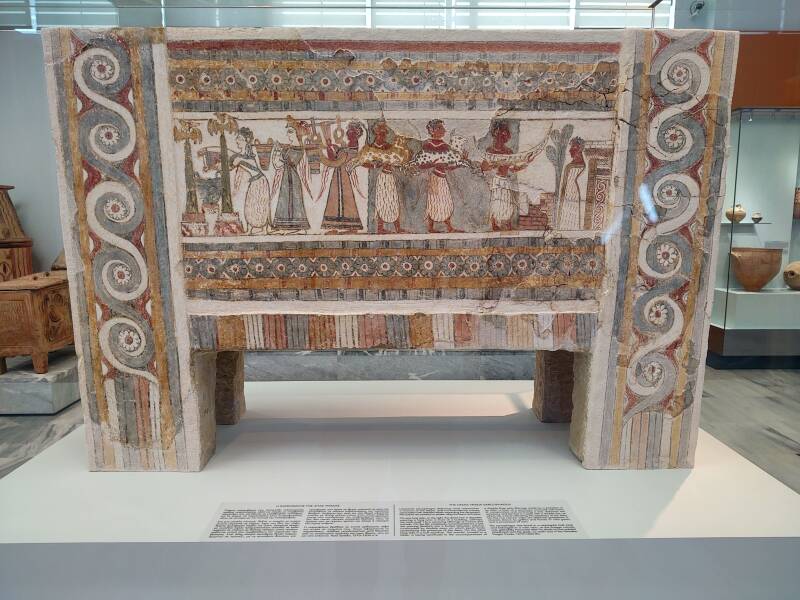
Largely self-taught linguist Michael Ventris decoded Linear B, discovering that it recorded Mycenaean Greek. Some of the details on this sarcophagus can be matched to descriptions of rituals found on tablets written in Linear B, recording Mycenaean Greek.
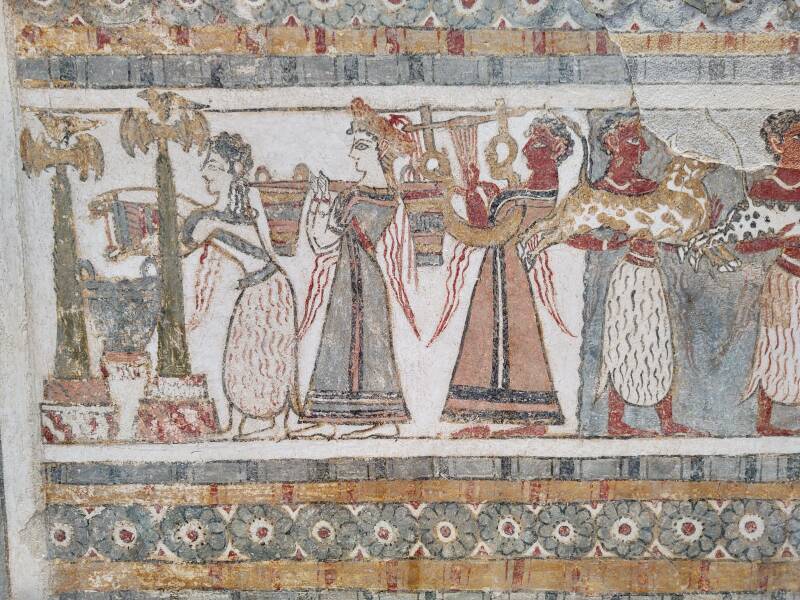
The Minoans used the Linear A script to make records in their language, or languages. Yes, we not only don't know anything about the language that they spoke, we don't even know if it was a single language or maybe multiple ones.
Agia Triada has been the source of more Linear A tablets than any other Minoan site. Here are some Linear A tablets in the Heraklion Archaeological Museum.
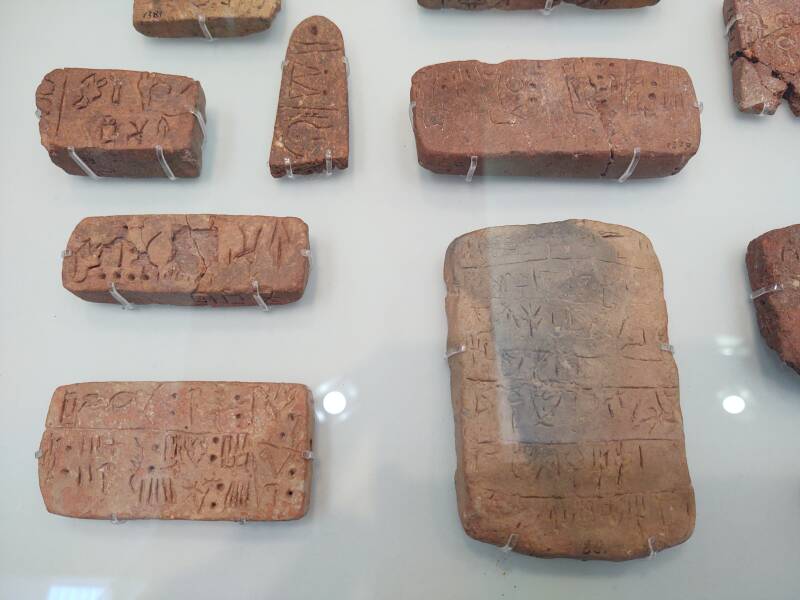
All the Linear A that we have totals up to 1,427 specimens containing a total of 7,362 to 7,396 signs. The entire Linear A corpus would easily fit onto two sheets of paper in a standard sized font.
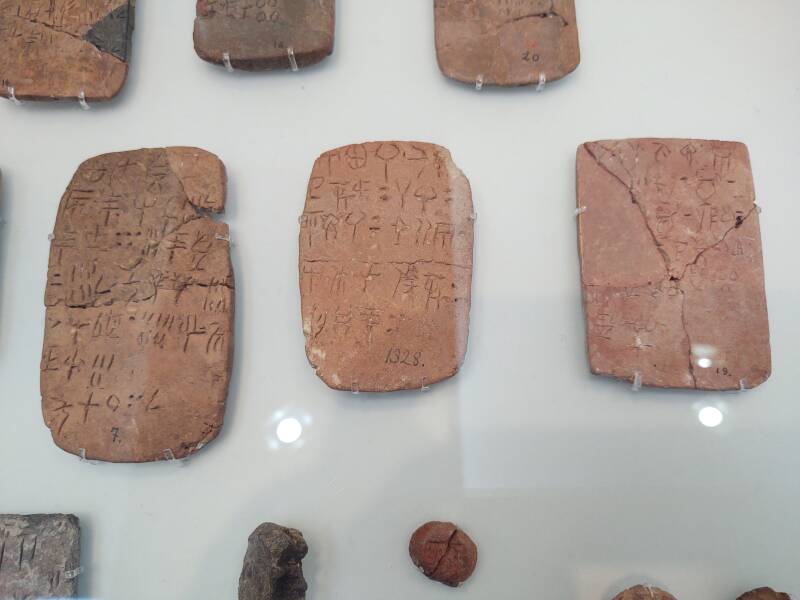
As best as we can tell, the Linear A samples are inventory records of trade goods and offerings made to various deities. This suggests that many of the non-elite inhabitants of the support settlement at Agia Triada were much like the administrative and scribal workers in Egypt at that time. The relatively large volume of Linear A records supports the theory that Agia Triada administered the port for Phaistos.
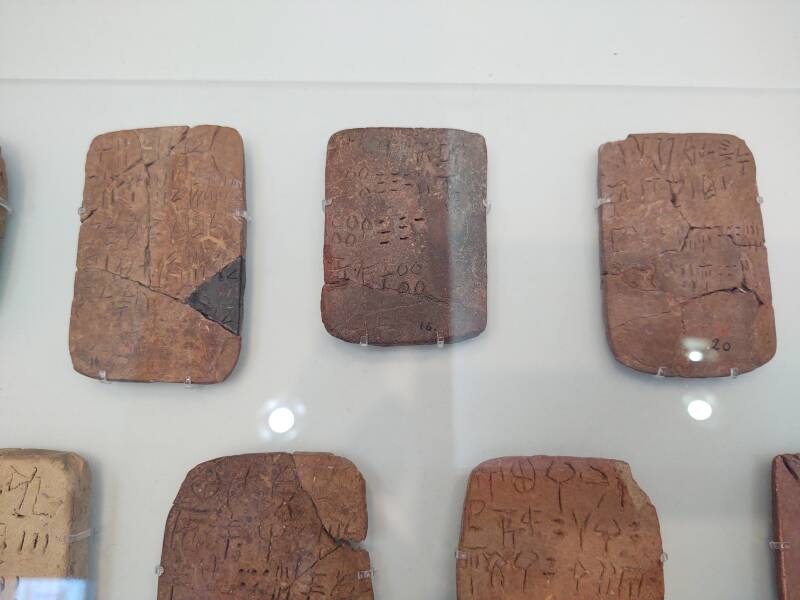
The Linear B script was derived from Linear A. Linear B was used to write Mycenaean Greek, and we have a pretty good idea of how pronounce that early form of Greek.
The obvious experiment was to select some Linear A tablets containing just those signs with clear mappings to Linear B signs we know how to pronounce. Then, read them out loud phonetically. The result is not partly recognizable or even vaguely suggestive to experts in the various languages spoken in the second millennium BCE in the lands around the eastern Mediterranean.
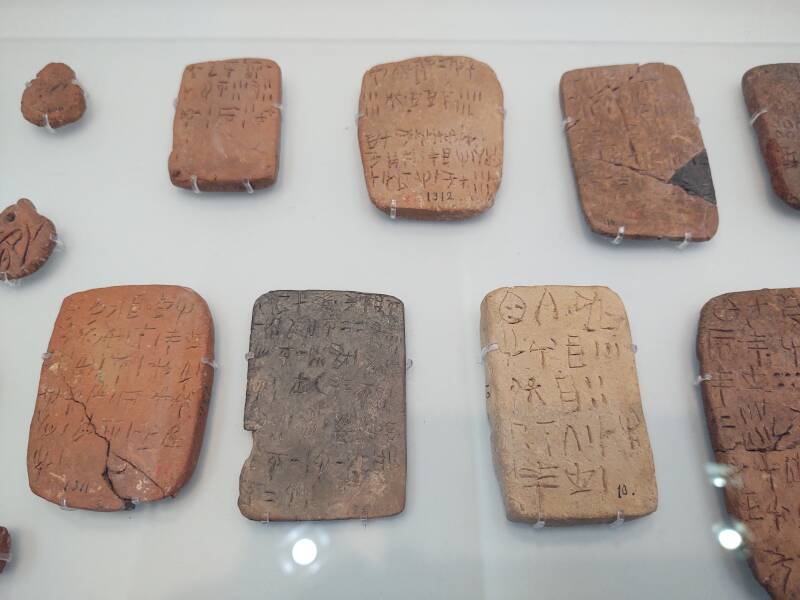
More Minoan Toilets, Drains, and Water Lines